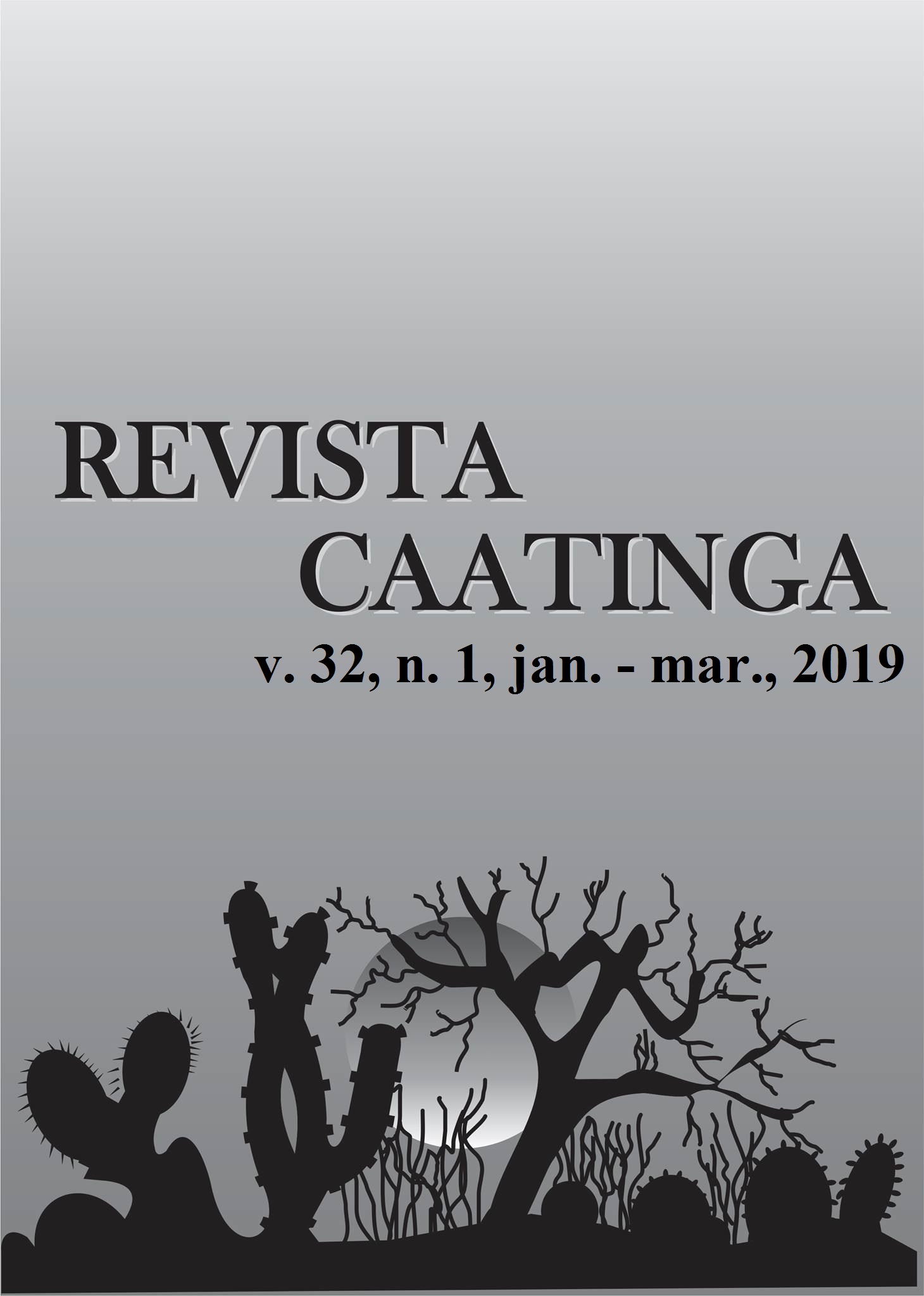STATISTICAL MULTIVARIATE ANALYSIS APPLIED TO ENVIRONMENTAL CHARACTERIZATION OF SOIL IN SEMIARID REGION
DOI:
https://doi.org/10.1590/1983-21252019v32n120rcKeywords:
Factor analysis. Cluster analysis. Soil variables.Abstract
Soil is a dynamic and complex system that requires a considerable number of samples for analysis and research purposes. Using multivariate statistical methods, favorable conditions can be created by analyzing the samples, i.e., structural reduction and simplification of the data. The objective of this study was to use multivariate statistical analysis, including factorial analysis (FA) and hierarchical groupings, for the environmental characterization of soils in semiarid regions, considering anthropic (land use and occupation) and topographic aspects (altitude, moisture, granulometry, PR, and organic-matter content). As a case study, the São José Hydrographic Microbasin, which is located in the Cariri region of Ceará, was considered. An FA was performed using the principal component method, with normalized varimax rotation. In hierarchical grouping analysis, the “farthest neighbor” method was used as the hierarchical criterion for grouping, with the measure of dissimilarity given by the “square Euclidean distance.” The FA indicated that two factors explain 75.76% of the total data variance. In the analysis of hierarchical groupings, the samples were agglomerated in three groups with similar characteristics: one with samples collected in an area of the preserved forest and two with samples collected in areas with more anthropized soils. This indicates that the statistical tool used showed sensitivity to distinguish the most conserved soils and soils with different levels of anthropization.
Downloads
Downloads
Published
Issue
Section
License
Os Autores que publicam na Revista Caatinga concordam com os seguintes termos:
a) Os Autores mantêm os direitos autorais e concedem à revista o direito de primeira publicação, com o trabalho simultaneamente licenciado sob a Licença Creative Commons do tipo atribuição CC-BY, para todo o conteúdo do periódico, exceto onde estiver identificado, que permite o compartilhamento do trabalho com reconhecimento da autoria e publicação inicial nesta revista, sem fins comerciais.
b) Os Autores têm autorização para distribuição não-exclusiva da versão do trabalho publicada nesta revista (ex.: publicar em repositório institucional ou como capítulo de livro), com reconhecimento de autoria e publicação inicial nesta revista.
c) Os Autores têm permissão e são estimulados a publicar e distribuir seu trabalho online (ex.: em repositórios institucionais ou na sua página pessoal) a qualquer ponto antes ou durante o processo editorial, já que isso pode gerar alterações produtivas, bem como aumentar o impacto e a citação do trabalho publicado (Veja O Efeito do Acesso Livre).







